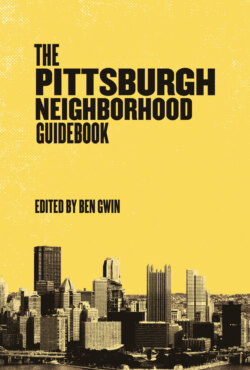Читать книгу Pittsburgh Neighborhood Guidebook - Группа авторов - Страница 6
Introduction
ОглавлениеOne of my favorite views of Pittsburgh is driving out of the Fort Pitt Tunnel at night, when the downtown skyline appears out of darkness. Lit up and framed by yellow bridges, the city feels full of possibility.
“Possibility” is something of a watchword in much of the recent writing about Pittsburgh’s supposed renaissance. Yet there is a disconnect between the stories of the normal people who live in Pittsburgh and the sponsored content extolling the city’s revival. According to the latter, UPMC, Walnut Capital, the tech industry, and the Mayor are saving our city from the brink of a post-industrial hellscape. The reality is much more difficult and complex.
Like most of the country, Pittsburgh suffers from wealth inequality, gentrification, and racism. There’s lead in the water, and we lack reliable public transportation and affordable housing. Development and redlining segregated the city decades ago, and those divisions remain. The police are militarized, and our schools are underfunded.
We started soliciting work for this collection in spring of 2019, and all the submissions were sent in before the coronavirus pandemic and George Floyd’s death. But while there aren’t direct accounts of the protests or sheltering in place, the problems plaguing Pittsburgh and other American cities that have been further exposed since March 2020 are evident in these stories. A feeling of unrest runs through much of this book.
Jason Vrabel and Brian Broome’s essays directly address displacement and gentrification during our awkward in-between phase of urban renewal. Brittany Hailer and Jim Daniels write about addiction and the ongoing opioid epidemic. There are essays about work and family by Vince Guerrieri and Lori Jakiela. Bowie Rowan and Ed Simon write about mass shootings and the community’s response.
There are more sentimental pieces, too. Multiple works mention of the fascinating steps to nowhere scattered along the hillsides. Stories of fistfights and heartbreak and hope set against a city with an identity crisis. I love baseball, so I am grateful to include Shannon Reed’s story about our sad franchise and its beautiful ballpark. As a lifelong Pirates fan, walking across the Clemente Bridge to see Andrew McCutchen and the Pirates in a pennant chase after twenty years of losing was a surreal, fleeting experience that I cherish.
Also included in the anthology are essays and poems set in the surrounding towns and suburbs. The story of Pittsburgh would be incomplete without Braddock, Trafford, Penn Hills and others.
I read and accepted the work of many writers I didn’t know before curating this guidebook. That was the best part of the editing experience. I am also pleased to include stories from a few dear friends and mentors. I hope the work in these pages paints a full picture of life in the region. And that it speaks to who we are as students, artists and workers in the Rust Belt and what it means to embody the region. There is more to our city than the downtrodden, Trump-supporting coal miner, and the transplant tech worker who complains about air quality. Pittsburgh is resilient.
I grew up in New Jersey, but my daughter has spent her whole life here. For her middle school writing class, she was assigned a neighborhood essay. She wrote about having two neighborhoods. She wrote about Evans City, where her mom and grandmother live. Riding her bike down the big hills to her friend’s house, and going to the ice cream place in town. She wrote about our house in Bloomfield, playing catch in Friendship Park, her cat, and walking to the gas station on Liberty to get hot fries. She wrote about how great it was to live in the city and the country. Her mom died in July 2018, and the support we received from our community was humbling.
As my daughter has grown into a tough and compassionate teenager, she’s embraced the city. We talk about different bus routes and the fastest ways to get places. We spend summers at her softball games around Pittsburgh. She and her classmates protest climate change and police brutality. My daughter’s generation gives me hope, just as I’m hopeful that this wave of civil unrest can lead to systemic change. When in-person classes resume, my daughter will return to school downtown, between the bridges, with a view of the skyline.
